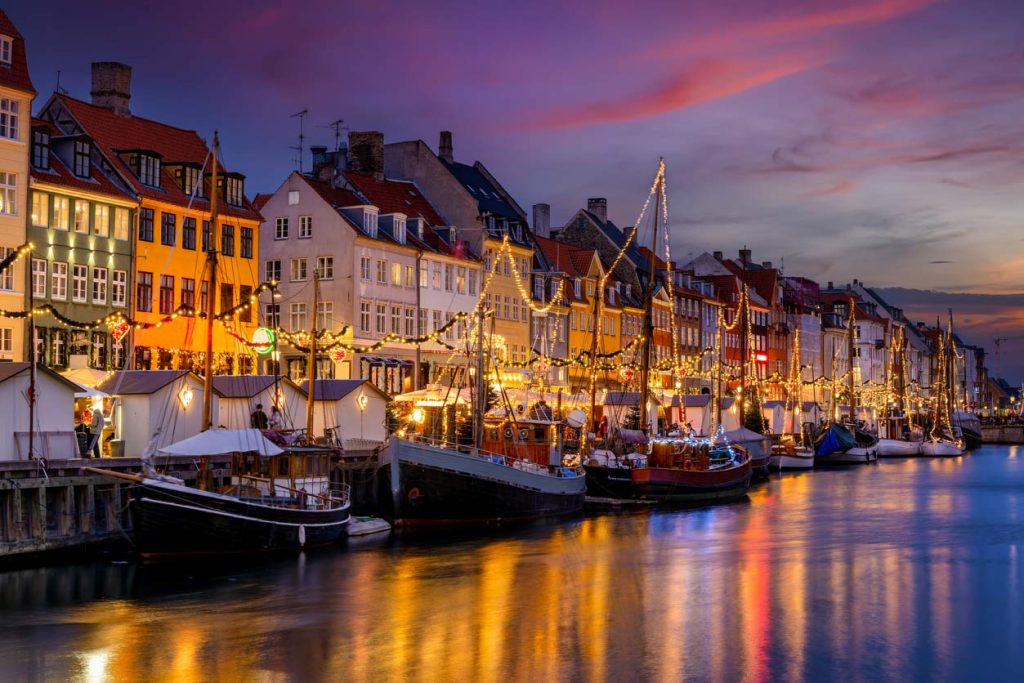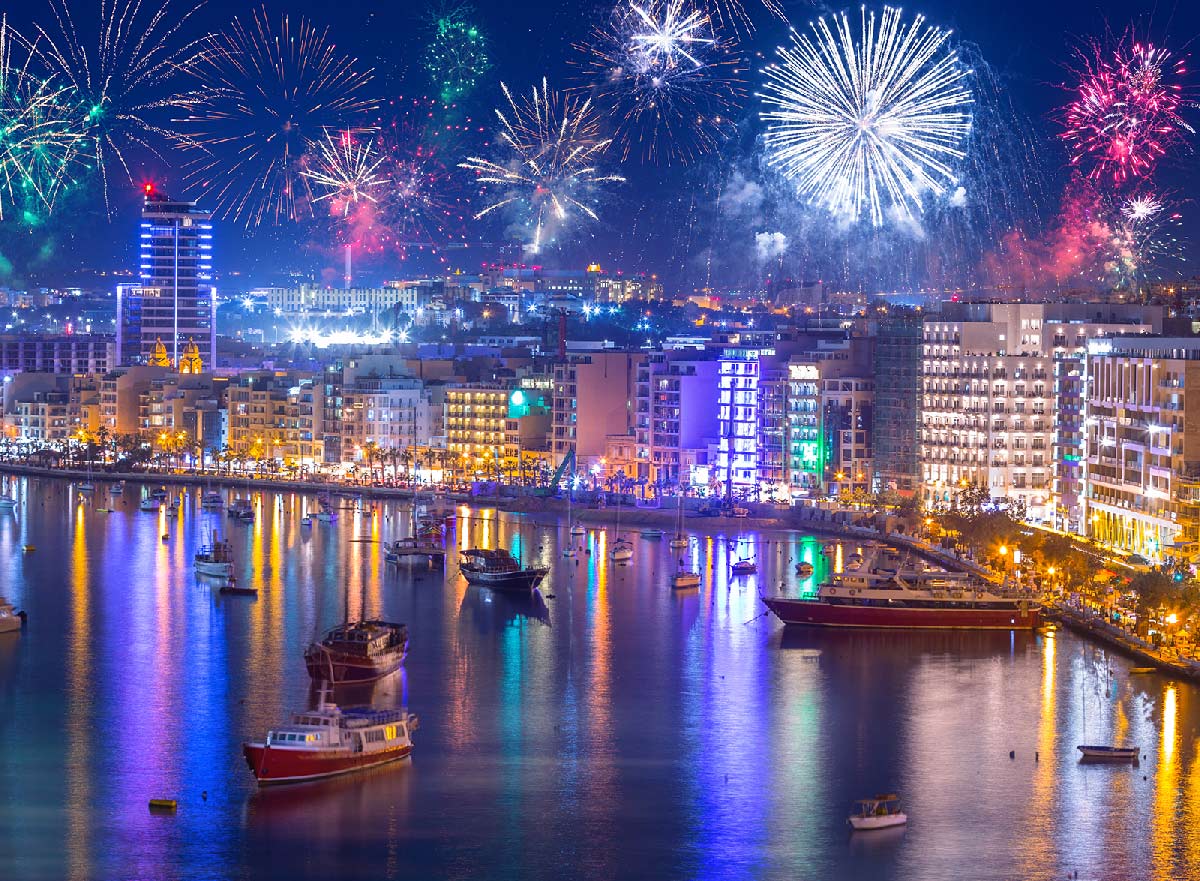Iceland
One of the loveliest and most comforting traditions is from Iceland, which sees the exchange of books on Christmas Eve. The rest of the night will then be spent reading them and eating chocolate. The tradition is part of a season called Jolabokaflod, or ‘The Christmas Book Flood’. The tradition started in World War Two. With paper being one of the few items that wasn’t rationed, people began exchanging books. As a result, Iceland publishes more books per capita than any other country, making them a nation of prolific readers, with most books sold between September and November.
Japan
While many Christmas traditions are steeped in history and centuries of tradition, Japan bucks the trend with perhaps the most interesting Christmas tradition, albeit a recent one. Although Christmas is not a national holiday in Japan, recent years have seen the development of a somewhat bizarre and unusual Christmas practice. Instead of gathering around the turkey as is customary in many cultures, it is now customary for the Japanese to head to their local KFC for a ‘finger lickin’ Christmas treat on Christmas Eve. The tradition began in 1974 after a hugely successful marketing campaign by Colonel Sanders and his team, called “Kurisumasu ni wa kentakkii!” or “Kentucky for Christmas!” Such is the popularity of the festive visit, queues of over two hours to secure a seat in the fast food outlets are not unheard of, with orders for KFC specials placed weeks in advance so as not to miss out on their Christmas treat.
Poland
On Christmas Eve in Poland, many families share opłatek (an unleavened religious wafer), each breaking off a piece as they wish each other Merry Christmas. Dinner for many does not begin until the first star appears in the night sky to symbolise the Star of Bethlehem and, traditionally, an extra setting is left at the table should someone show up uninvited.

Norway
No one does Christmas quite like the Nordic countries where cosy rituals and nostalgic customs fill the month of December as the countdown to Christmas begins. In Norway, the Christmas season is known as Julebord and starts on December 3rd as groups of friends and colleagues gather in restaurants and bars to indulge in Christmas treats such as risengrød (hot rice pudding), pork ribs, lamb or mutton, medisterpølse (spicy sausage), and fish. The meal is usually served with sour cabbage, brussel sprouts, and lingonberry jam.
Staying in Norway, it is believed that witches and evil spirits traditionally came out on Christmas Eve looking for brooms to ride on. Hence the century-old tradition for locals to hide their brooms on Christmas Eve to stop them being stolen.
Denmark
In neighbouring Scandinavian countries, like Denmark and Sweden, St. Lucia’s Day is celebrated on December 13. This is viewed by many as the start of the holiday season and it is meant to bring hope and light during the darkest time of the year. Schools generally close around noon on the day of the festival so that families can prepare for the holiday. To mark the day, the oldest daughter in each family dresses in a white gown and wears a crown made up of twigs and nine candles while boys dress in white pyjama-like costumes and sing traditional songs.

Czechia
Czechian traditions are very much linked to what the year ahead may have in store. For example, an old tradition says an unmarried girl should throw a shoe over her shoulder. If the shoe falls pointing towards a nearby door, marriage is on the cards for the coming year. Another Christmas tradition to predict your luck in the coming year is to cut an apple in half. If the core has four pointy corners, bad luck is coming to you, while five corners indicate health and happiness.

Venezuela
In the days leading up to Christmas it is not uncommon for Venezuelans to attend a daily church service called Misa de Aguinaldo (Early Morning Mass). However, in the capital, Caracas, and in larger cities, it is customary to travel to the church service on roller skates. ‘Las patinatas’ or ‘The Skating’, originated in the 1950’s as it allowed children to use their new toys, which were often roller skates or bicycles. Indeed, so widespread is the practice many roads in the capital are closed until 8am to provide Christmas worshipers with a safe passage.
Mexico
In Mexico, the Christmas season officially kicks off on December 16th with Las Posadas, which translates to ‘The Inns’. This tradition sees locals, often children, dress up as Mary and Joseph and together with their neighbours, they lead a procession that sees them travel from house to house over nine nights looking for a ‘place to stay’ in a reenactment of the Nativity. Musicians follow the procession, and hymns are sung as each night they are turned away until, on December 24th, they are finally invited in, symbolising the birth of Jesus. This is then followed by celebrations featuring feasts, fireworks, and piñatas filled with sweets for the children.

Guatemala
Guatemala sees the Christmas traditions kick off the week before Christmas as households embark on a deep clean of their house. With locals believing that the devil and other evil spirits live in the dark, dirty corners of your home, and cleanliness being next to godliness, all rubbish is cleared out, piled high and set alight with an effigy of the devil on top. The ceremony is called La Quema del Diablo or the ‘Burning of the Devil’. The idea for Guatemalans is to burn all the bad from the previous year and start a new year fresh from out of the ashes.
Malta
Malta has rich and vibrant Christmas traditions shaped by its unique history and geographical location which sees Arabic, British and Southern European influences come together. A predominantly Catholic country, Midnight Mass is a key part of the Christmas festivities, with churches packed for what is as much a cultural celebration as a religious one. The Midnight Mass sermon is always delivered by a young boy or girl aged 7 to 10 and after mass, parish priests offer the community traditional Maltese date cakes (mqaret) and coffee while neighbours exchange greetings. Many villages see a procession through the streets after the service, led by local children singing traditional hymns, carrying lamps and a statue of the Baby Jesus.

